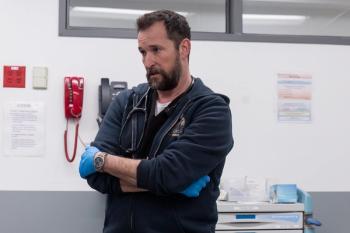
Patient Safety Efforts: Then, Now, and Beyond
At HIMSS 2017, Patricia Sengstack led a conversation peppered with allusions to books and films from recent memory, bringing a certain levity to the weighty and important topic of patient safety. IT can help enormously, but also create problems of its own.
In the Chapin Theater of the Orange County Convention Center in Orlando, Florida, talk of patient safety and health IT came with a pop culture tinge. Patricia Sengstack, DNP, formerly of the National Institutes of Health and currently Chief Nursing Informatics Officer for the Bon Secours Health System, led the conversation. She peppered the presentation with allusions to books and films from recent memory, bringing a certain levity to the weighty and important topic of patient safety.
She was joined by Ronni Solomon, JD, Executive Vice President and General Councel at the ECRI Institute, and William Marella, MBA, Executive Director of PSO Operations and Analytics also at the ECRI Institute.
The occasion centered around discussing where the patient safety movement had been and where it was headed. Sengstack pondered if the movement, increasingly a point of focus in health systems, could be tied back to primum non nocere, the ancient ethic of “do no harm,” before pivoting to the general ideology that ran through Mitch Albom’s 1999 book Tuesdays with Morrie. The need, she said, was for a separation from the hype and busyness of media culture and a focus on actual transparency.
She then swung this to another 1999 release, the “To Err is Human” report from the Institute of Medicine of the National Academies. She pointed to the report, which called loudly for a more transparent and honest medical community, as a landmark in the road to better patient safety.
Marella added that the hardest part of the effort is changing a health system’s culture to one where every employee at every level, whether a nurse or an IT worker, was aware of not only the risks associated with their position but of those at other levels of the company. Nodding to the Miracle on the Hudson and subsequent film, he noted the importance of watching industries, like aviation, that also must be extremely proactive in mitigating risks. Sully Sullenberger, he pointed out, attributed his ability to land a failing plain with no harm to the passengers as an achievement of crew resource management and simulation training.
Solomon highlighted the need for adaptation, pointing to an adage she likes to consider, that “the only real mistake is one from which we learn nothing.”
The trio was adamant that great progress has been on the patient safety front over the last 20 years, citing studies that indicated a savings of $28 billion and 125,000 lives between 2010 and 2015 alone. Still, some reports that get media play can be alarmist. One published in 2013 cited medical error as the third leading cause of death.
“I think it got a lot of coverage in the lay media and I think they were extrapolating from the Medicaid community to the general population and I think it took them down a bad path,” said Marella, with Solomon cautioning against taking such studies at face value without subjecting true rigor.
“Whether it’s 48,000 or 98,000 [annually]…Houston, we still have a problem,” Sengstack said of error-related deaths. She understands aversion to transparency, say that while she thinks “there has been a pretty extraordinary culture change…I think that we have come along way. We still live in a super litigious society, so fear about being too transparent is a rational fear”
The trio pointed to successes and recommended approaches, including daily safety huddles that keep all members, up to the C-suite, diligent about ensuring patient safety, checking their work faithfully, and remaining transparent. Solomon pointed to a recent example in her own institution in which a simple blood-type transcription error was caught, but could have had negative consequences for the patient. Rather than ignore the issue and merely be glad that something bad did not happen, she says the nurses contacted her to make the situation known. This, she believes, is progress, drawing to mind an adage she mentioned earlier: “The only real mistake is one from which we learn nothing.”
“Every organization needs a champion to get this up and running,” she said.
Looking to the future, as so many at HIMSS are, they were quite excited for continuing safety improvements and health technology that involved “less clicks.”
Discussing innovations that made them most hopeful, Marella highlighted inexpensive genetic tests that could guide therapy selection, in the case of prescribing anti-depressants or anti psychotics and avoiding negatives like opioid addiction. He was also happy to talk about AI-assisted decision support-“Star Trek set my expectations”-while wondering what the downsides could be.
Solomon was excited about a novel idea. “Police are wearing body cams, what if a nurse did?” she asked, thinking of a time where checklists and supervisor oversight would be replaced with an actual visual document of hospital room interactions and perhaps even smart systems that could analyze the videos to find inconsistencies.
Sengstack noted that this HIMSS in Orlando was something of an occasion, as three years prior at HIMSS 2014 in the same city the team had just launched the Partnership for Health IT Patient Safety collaborative. 2017, she said, would be a big year for the group, as they plan to scale it out.





























































































